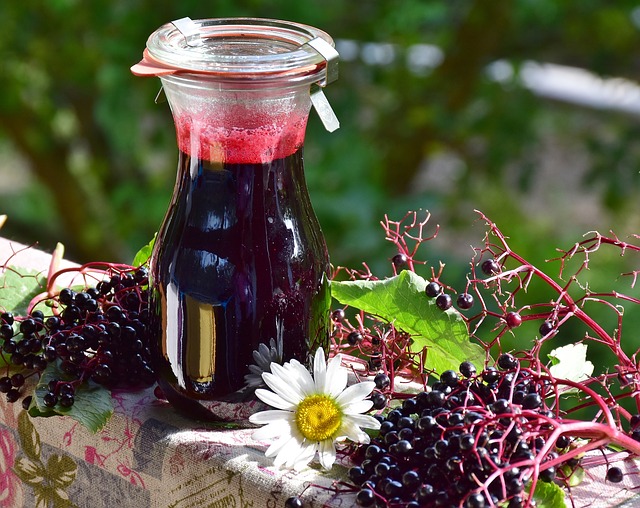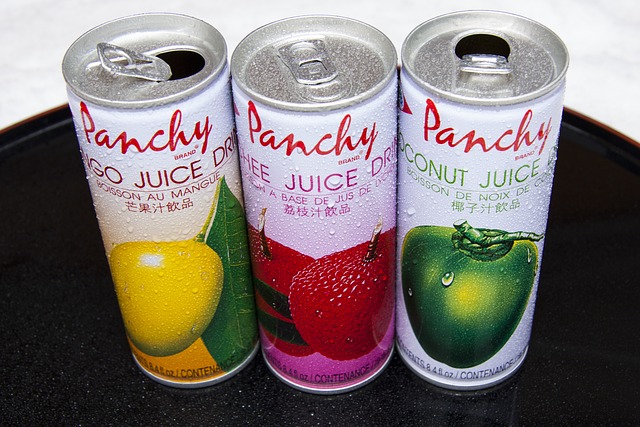vegetable juices
Things You Should Know Before You Start Juicing

The human body has very specific requirements for optimal nutrition intake, and fruit and vegetable juices easily fulfill those needs when consumed daily. If you are planning on a more formal regime of juice drinking, ascertain which ones will be most beneficial to you. This article provides several excellent tips about juicing.
Use a masticating juicer. These juicers are more gentle and allow the liquid to keep more nutrients. The juice obtained this way will last longer in the refrigerator.
Leafy Greens
Use cucumber as an additive when juicing dark leafy greens. Many dark, leafy greens taste very strong when raw. Cucumber will not only mask this taste, but adds a refreshing flavor to your drink. Cucumber is also very nutritious, especially if you don’t peel it beforehand.
When making apple juice, make absolutely sure to choose the ripest, sweetest apples you can. Make sure to get rid of the bruises if you plan on using bruised apples. Especially good apples for making juice include the Rome, Fuji, Gala, and Red Delicious varieties. These all give a sweet and tasty flavor.
Savor the juice, and drink it slowly. Make sure to get all the flavor possible out of your concoctions. Give your saliva the chance to mix into the juice, and begin the digestion process.
Juice can be considered an entire meal. Once you have made a few glasses of juice, and you have ascertained the amount of produce you need to produce one glass, you will be better informed. By drinking your juice by itself, your stomach will be able to absorb the nutrients quicker.
Clean out your juicer as soon as you are done juicing. Additionally, the juice from some fruits and vegetables can stain juicer jugs and blades.
Look into the benefits of each fruit and vegetable you’d like to include in your juices before you choose your recipes. Due to the huge variety of market produce available, many differences can exist in the types of nutrients offered. Attempt to blend the fruits and vegetables which provide a wide variety of nutrients you need on a daily basis. This will give you some interesting tastes as well as offer you a variety of different vitamins and nutrients.
Making juice to drink later is useful, but you need to take precautions to prevent the juice from changing color. Understandably, brown or grey colored juice isn’t appetizing to most people. The addition of two teaspoons of lemon juice, fresh if possible, can help prevent this change. The flavor will not be overwhelmed from the lemon and the juice will maintain that bright fresh look.
If you have urinary tract infections, or other bladder issues, consider adding cranberries to your list of fruits with which to juice. Use them soon after finding you have these issues.
If you suffer from diabetes or hypoglycemia, stick to juicing only vegetables until you have spoken with your physician. Do not drink fruit juice because it can cause your blood sugar to rise rapidly. You need to keep tabs on the amount of fruit you juice in order to avoid complicating your illness. Using vegetables in your juices will allow you to get all necessary vitamins and minerals, but won’t put your health at risk.
Drink your juice quickly. To get the most health benefits from juices, it’s important to drink them right away, as nutrients are lost if the juice is allowed to sit around. The more time you take to drink what you’ve just juiced, the less nutrients you’ll benefit from. Therefore, to ensure that you receive the most nutrients, drink it immediately after making it.
Fresh juice might taste a bit bitter, but this can be masked by adding in sweet fruits and veggies. Oranges, strawberries and carrots impart sweet and unique flavors. A favorite of many is a combination of cherries, strawberries, cranberries and blueberries. Mix different fruits together to find a taste that you love!
To keep your body in top condition, incorporate freshly squeezed fruit and vegetable juices into your diet. Drinking freshly made juice provides energy that keeps you focused on your exercise routine and helps build muscle. Tailor your juices or smoothies to suit your fitness regimen. For example, add more protein if you lift weights or more electrolytes if you’re running.
Store dark, leafy vegetables in tightly-sealed plastic bags to keep them fresh until it’s time to juice. Always wash and thoroughly dry them before storing them.
Have your family join you with juicing if you want to make it more enjoyable. Your children can wash the ingredients before you chop them.
If you use juicing, be aware of the effects it can have on your teeth. This is extremely important because certain varieties of juices will stain your teeth. Carrots and beets for example, can cause this to occur when they are juiced. After you drink one of these colorful juices, be sure to brush your teeth. This is especially true if your teeth are easily stained.
As was stated at the outset, consuming a freshly made juice on a daily basis is incredibly beneficial to your health. Drinking fresh juices can improve your health, fitness, and well-being.
Tips And Strategies On Juicing

Are you looking for a simple way to add more fruits and vegetables to your diet? Consider juicing! Freshly squeezed vegetable and fruit juice blends are nourishing, flavorful and convenient for sipping at your leisure. The insights here will give you ideas of how to enact a juicing regimen into your life.
Get a masticating juicer. These juicers gently extract the juice which helps retain many nutrients in the liquid. Juice from masticating juicers also stands up better to storage.
If you are adding juices to your diet for health purposes, focus on adding green vegetables to your recipes. Juice should be half to three quarters spinach, broccoli or chard for the most nutrients possible. To give the juice a palatable taste, round it out with your favorite fruit juice.
Savor the juice, and drink it slowly. Enjoy the taste, and savor the different flavors. Start the digestive process by letting your saliva saturate the juice.
Plan your juices by color. From vibrant greens to bright reds, all these colored vegetables and fruits offer many kinds of minerals and nutrients. Different colored juices provide different taste and nutritional experiences.
Vegetables your children won’t eat may be palatable to them in the form of a juice. Many children are not big fans of vegetables. Juice vegetables and fruits together. Your children should enjoy this tasty drink more than a plate of vegetables.
Coffee Filter
If you don’t want pulp in your drink, use a coffee filter. You may not like the pulp consistency that some juices will create. Thankfully, the juice can be strained using a cheesecloth or a coffee filter. Both of these can eliminate the majority, if not all, of the pulp.
When you select a juicer, make sure that the one you choose can be quickly and easily dismantled and cleaned. If your juicer is time consuming to assemble and clean, you are less likely to use it on a regular basis. Always clean soon after juicing as your juicer will be easier to clean when the pulp is still moist.
If your bladder is upset, or if you’ve got a urinary tract infection, try juicing cranberries. You should use them whenever you feel the symptoms arise.
Blood Sugar
Consult your physician before you make anything other than a vegetable juice if you have diabetes or hypoglycemia. Fruit juice could cause a fast increase when it comes to your blood sugar. You need to keep tabs on the amount of fruit you juice in order to avoid complicating your illness. Vegetables are a great alternative for getting required nutrients without throwing your blood sugar out of whack.
Listen to your body as you drink various juices. You might drink something that your system doesn’t like. If you feel a little stomach rumbling after a certain juice, check the ingredients you used to make it; see if there were any new items. Use smaller amounts to condition your body to those ingredients.
A masticating juicer is the best choice for the beginner or expert alike. They have features that are lacking in other juicers, and are able to mill, grind, and puree so you can even make frozen deserts. Such options greatly increase the number of juice concoctions you can have in your repertoire.
Add more ingredients with negative calories to make a nutritious juice that also helps you burn fat. Negative calorie foods include choices like herbs, cabbage and dark greens such as broccoli and kale. In addition, fruits that are high in fiber are an excellent choice, because it requires a large amount of digestion in order to effectively break them down.
Have your family join you with juicing if you want to make it more enjoyable. Children can easily wash up the fruits and vegetables while an adult cuts them up.
Constipation can easily be treated with juicing. To relieve constipation make juice with grapes, cabbage, lettuce, parsnips, and papayas. If you suffer from frequent constipation, juicing daily will help regulate your bowels.
Drink juice first before eating a meal. The juice can tide you over between meals. Also, your system is able to use the nutrients more efficiently if juice is drunk on an empty stomach. Then, at the meal you’ll be less hungry, so you will tend to not overeat.
Stay away from very sweet fruits as you juice. “You are what you eat” is an appropriate adage to keep in mind; drinking such sweet juices may be enjoyable, but they can easily spike the sugar levels in you blood. A great alternative would be to use vegetables instead of fruit for a healthy drink you can enjoy. Add a fruit to your vegetable juices once in a while, but try keeping them separate.
Juicing is something that anyone can do, even if you don’t have a lot of time or money. With the advice in this article, you’ll be able to make tasty fruit and vegetable juices that will boost your overall health. Once you get started juicing, you may find that you’re unable to stop.